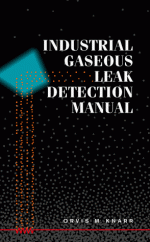Tab Article
Use today’s powerful leak detection methods to maintain quality and productivity in your industrial operations
Don’t allow gaseous leaks to compromise quality-or hinder productivity-in your plant.Whether you’re a manager, engineer, or technician, this essential manual will show you the practical aspects of gaseous leak detection methods that are applicable in a wide range of industries.
Organized in a handy how-to format, the manual explains and illustrates the technology of leak testing small components as well as large process systems. It also corrects misinformation all too prevalent in industry on gaseous leak detection.
Written in clear, easy-to understand language, the reference will enable you to
* Master the techniques of hand probing, fixture design, and integration of computer-controlled production test lines
* Learn from 60 valuable illustrations of a wide range of fixture designs
* Get solutions to leak detection problems faced by engineers in all industries
* Explore applications in the aerospace, automotive, chemical processing, electric power generation, packaging, semiconductor, and other industries
This quality assurance and maintenance tool also provides the detailed information needed by management to select and operate appropriate leak test methods and equipment.


